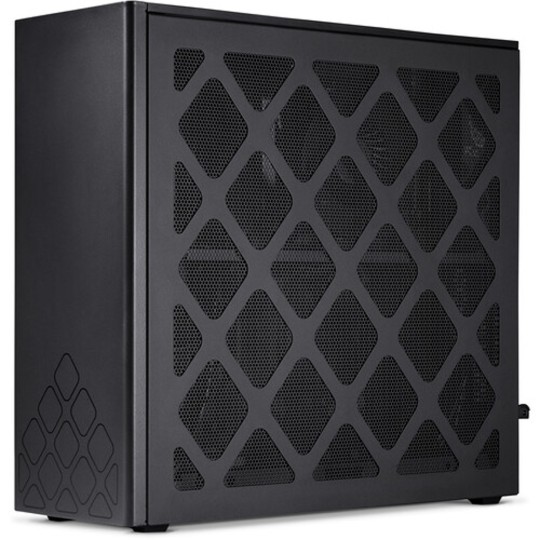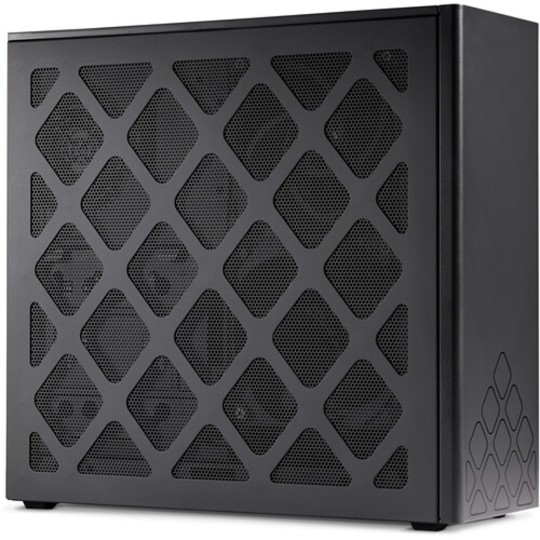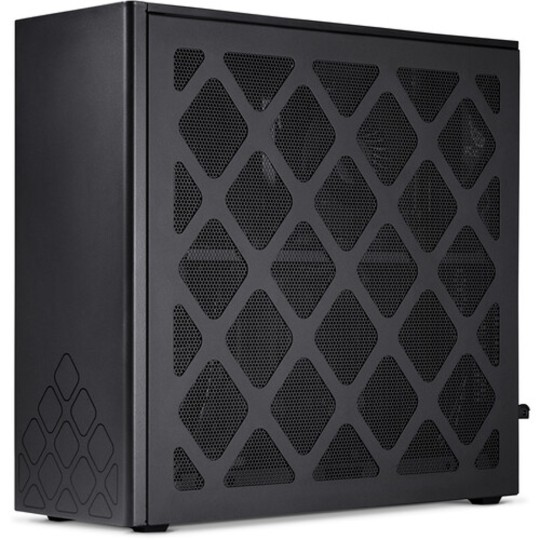#HighPerformanceComputer
Explore tagged Tumblr posts
Text
#Continental#HighPerformanceComputer#ElectricVehicles#ElectricVehiclesNews#e_MobilityNews#EVNews#ElectricCar
0 notes
Photo








Intel NUC 13 Extreme Kit NUC13RNGi9 Mini PC with 13th Gen i9-13900K Processor arrived again. Purchase now: https://nationalpc.in/computers-and-laptops/desktops/mini-pc/intel-nuc13-extreme
#IntelNUC#NUC13RNGi9#MiniPC#13thGen#i913900K#ExtremeKit#GamingPC#PowerfulPerformance#NationalPC#NewArrival#TechEnthusiast#HighPerformanceComputer#BuyNow#DesktopPC#CompactDesign#LatestTechnology#InnovationInTech#UpgradeYourSetup#GamingSetup#UltimatePerformance#Corei9Processor#IntelInside#FastProcessingSpeed#SmoothMultitasking#GamersParadise#WorkFromHomeEssential#TechSavvy#ImpressiveSpecs#OnlineShopping#LimitedStock
0 notes
Text
MediaTek Kompanio 838 Top 8 tech features for Chromebooks

MediaTek Kompanio 838: Boosts Productivity and Provides Longer Battery Life in Chromebooks That Lead the Class
High performance computing is offered by the MediaTek Kompanio 838, which boosts productivity and improves multimedia, online surfing, and gaming. With the great battery life offered by this highly efficient 6nm processor, Chromebook designs that are thin and light will enable users, educators, and students to be genuinely mobile throughout the day.
Boost innovative thinking, learning, and productive work
The MediaTek Kompanio 838 is a major improvement over the lower-end Kompanio 500 series, offering exceptional performance and greater multitasking.
Due to a doubling of memory bandwidth over previous generations, the improved octa-core CPU with faster Arm “big core” processors and a highly capable tri-core graphics engine can handle significantly more data at a faster rate.
With compatibility for both DDR4 and LPDDR4X, OEMs can now design products with greater flexibility to satisfy market performance needs and BOM targets. Additionally, the highly integrated architecture offers the highest power efficiency available on the market for long-lasting batteries.
Up to 76% quicker visual performance
Increased performance in CPU-based benchmarks by up to 66%
Performance in web-based benchmarks was up to 60% better than that of the MediaTek Kompanio 500 series.
Superior Image Processing Unit for Cameras
The MediaTek Kompanio 838 equips Chromebooks with state-of-the-art dual camera technology and high quality imaging features. Photos and videos produced with the new MediaTek Imagiq 7 series ISP have more vibrant colours, especially in difficult lighting situations, thanks to improvements in HDR and low-light capture quality over the previous generation.
Improved AI on-Device
With unmatched power efficiency, the MediaTek Kompanio 838 with MediaTek NPU 650 offers entertainment that is more engaging and of higher quality. The MediaTek NPU can quickly complete complicated computations and is optimized for processing picture data efficiently.
Dual 4K Displays
For demos, presentations, movie nights, or just increased productivity with more visual real estate, premium Chromebooks with the highest quality screens may also output at the same resolution to a connected 4K smart TV or monitor thanks to support for 4K dual displays.
Perfect for 4K Media Streaming
With hardware-accelerated AV1 video decoding built right into the CPU, the MediaTek Kompanio 838 is now the perfect device for effortlessly streaming high-quality 4K video content without using up too much battery life.
Lightning-fast, safe WiFi
Support with MediaTek Filogic Wi-Fi 6 and Wi-Fi 6E chipsets by the MediaTek Kompanio 838 allows for dual- and tri-band connectivity choices. This enables more dependable connections with 2×2 antennas, quicker speeds of up to 1.9Gbps, and improved security with WPA3.
Extended Battery Life
With the class-leading power efficiency of the highly integrated 6nm processor, Chromebook designers can now construct fanless, silent devices with true all-day battery life.
The MediaTek Kompanio 838 is an excellent tool for the classroom that increases productivity and offers fluid 4K multimedia and web surfing experiences. With the great battery life offered by this highly efficient processor, Chromebook designs that are small and light enable teachers and students to be genuinely mobile throughout the day. These are the top 8 internal tech elements that support more creative thinking, learning, and productive working.
Top 8 Kompanio 838 tech features
1) Improved Efficiency
The MediaTek Kompanio 838 boasts an octa-core CPU with Arm Cortex-A78 ‘large core’ processors, a powerful tri-core graphics engine, twice the memory bandwidth of previous generation platforms, and exceptional speed and enhanced multitasking.
2) HDR cameras that capture excellent low light images
With the improved HDR and low-light capture quality of its latest generation MediaTek Imagiq 7 series ISP, images and videos have more vibrant colours even in difficult lighting situations. For more options and product distinctiveness, product designers can even incorporate dual camera designs with various lenses or sensors.
3) High Definition Webcams
Manufacturers of devices can design 4K webcams to provide superb streaming quality, which enhances your credibility when participating in video conferences and working remotely. In remote learning scenarios, this capability enables students to view the entire classroom and additional information on slides.
4) Improvement of On-Device AI
With unmatched power efficiency, the MediaTek NPU 650, which is integrated into the processor, offers effective picture data processing for more interactive and superior multimedia.
5) Upgrade the workstation with two 4K monitors.
Chromebook manufacturers can now incorporate the greatest detail screens into their newest models and add an external display connection that can output at the same resolution thanks to support for not just one, but two 4K monitors. For demos, presentations, movie evenings, or just to enjoy a healthy dose of increased productivity due to the extra visual real estate, connect to a 4KTV, monitor, or projector.
6) Perfect for Media Streaming in 4K
Now that the MediaTek Kompanio 838 has hardware-accelerated AV1 video decoding built into the CPU, it’s perfect for effortlessly viewing high-quality 4K video streams with the least amount of battery waste.
7) Extended Battery Life
With its class-leading power efficiency and true all-day battery life, this processor—which is based on an advanced 6nm chip production process—allows Chromebook designers to create designs that are light, thin, and even fanless. It also gives users the confidence to leave their charger at home.
8) Lightning-fast, safe WiFi
Although not a component of the Kompanio 838 processor itself, the platform gives device manufacturers the choice to use MediaTek Filogic Wi-Fi 6 or Wi-Fi 6E chipsets, based on what the market demands. This makes it possible to have dual-band or tri-band connectivity options. Both provide dependable connections through 2×2 antenna, improved WPA 3 security, and throughput speeds of up to 1.9Gbps (when using Wi-Fi 6E).
Read more on Govindhtech.com
#Highperformancecomputing#MediaTekKompanio838#Kompanio500series#DDR4#Chromebooks#premiumChromebooks#monitor#news#technews#technology#technologynews#technologytrends#govindhtech
5 notes
·
View notes
Text
Hewlett Packard Enterprise - One of two HPE Cray EX supercomputers to exceed an exaflop, Aurora is the second-fastest supercomputer in the world:
https://www.hpe.com/us/en/newsroom/press-release/2024/05/hewlett-packard-enterprise-delivers-second-exascale-supercomputer-aurora-to-us-department-of-energys-argonne-national-laboratory.html
HewlettPackard #HPE #Cray #Supercomputer #Aurora #Exascale #Quintillion #Argonne #HighPerformanceComputing #HPC #GenerativeAI #ArtificialIntelligence #AI #ComputerScience #Engineering
#hewlettpackard#hpe#cray#supercomputer#aurora#exascale#quintillion#argonne#highperformancecomputing#hpc#generativeai#artificialintelligence#ai#computerscience#engineering
2 notes
·
View notes
Text
High-Performance 2U Server with Intel® Xeon® & Optane™ Memory Support
Looking for a high-density server that delivers both performance and scalability? The HexaData HD-H261-H60 Ver: Gen001 is built for demanding enterprise and HPC environments. With dual 2nd Gen Intel® Xeon® Scalable Processors, up to 64 DIMM slots supporting Intel® Optane™ persistent memory, and high-speed Mellanox Infiniband EDR 100G support, it’s the ideal solution for businesses that need powerful, space-efficient infrastructure.
High compute power
Exceptional memory support
Optimized for fast data throughput
For more details, visit: Hexadata
#best server solution provider in delhi ncr#best cloud computing service provider#best computer service provider#best server provider#best super computer provider#best system integrater#CloudComputing#computer hardware#DataCenters#Hexadata#HighPerformanceComputing#PedestalServers#server solution provider
0 notes
Text
How Does (etr:amd) Reflect Advances in Semiconductor Innovation?
Advanced Micro Devices, a prominent name in the global semiconductor industry, continues to capture market attention through strategic developments in AI technology and high-performance computing. As a competitor in the evolving semiconductor landscape, (etr:amd) reflects the company’s efforts in the AI chip segment and its influence within data center advancements. These initiatives have contributed to its presence in institutional portfolios and broader tech sector discussions, reinforcing its relevance in the world of semiconductors and advanced computing.
Semiconductor Leadership and Market Expansion
(Etr:amd) represents Advanced Micro Devices, which has positioned itself among key players in the semiconductor industry by advancing high-performance CPUs, GPUs, and AI-enabled hardware. As demand continues to expand across gaming, cloud computing, and AI workloads, the company has moved toward enhancing its product offerings to address both general-purpose and specialized computing requirements.
The release of its latest series of AI chips, aimed at supporting large language models and training-intensive applications, signifies the company’s intention to claim a stronger foothold in the competitive AI hardware segment. Through this evolution, (etr:amd) maintains relevance not only in equity discussions but also within the context of emerging technologies.
Strengthening Data Center Relevance
Data centers represent a vital business segment for the company. The growing volume of generative AI applications and cloud-native operations has elevated the importance of hardware optimization, where AMD’s processors offer energy efficiency and performance advantages.
Collaborations with major cloud service providers, as well as increasing adoption of the company’s products in hyperscale environments, contribute to its expanding presence in high-performance server infrastructure. The emphasis on scalable architecture, supported by custom solutions, strengthens alignment with enterprise clients seeking efficiency and adaptability. As such, (etr:amd) continues to feature prominently across institutional monitoring platforms.
Competitive Positioning in the GPU Market
The GPU market continues to play a central role in technological advancement, particularly in graphics-intensive tasks and machine learning acceleration. The company’s graphics portfolio has evolved to meet rising expectations in gaming, content creation, and AI-driven visual applications.
While the competitive landscape features dominant players, AMD has enhanced its capabilities by introducing architecture improvements, reduced power consumption, and developer-friendly ecosystems. These innovations support the company’s profile in discussions of semiconductor competitiveness and technological parity in the GPU domain. This sustained development contributes to keyword visibility for (etr:amd) across financial data services.
Strategic Developments and Industry Engagement
Recent strategic focus areas for the company include AI integration, power-efficient computing, and platform interoperability. Its acquisition of businesses specializing in adaptive computing has enabled the expansion of customizable AI solutions that align with modern enterprise needs. These developments have further reinforced the relevance of (etr:amd) in conversations surrounding scalable and intelligent semiconductor solutions.
Participation in industry-wide events and product showcases further supports visibility. The inclusion of advanced chipsets in both consumer-grade and enterprise-level devices amplifies brand recognition and ensures that (etr:amd) maintains consistent coverage across platforms analyzing semiconductor dynamics and tech sector performance.
Institutional Participation and Broader Tech Influence
The company has received attention from institutional participants due to its relevance in emerging technologies and diversified business units. In the broader context of the tech sector, its exposure to AI infrastructure, advanced GPUs, and enterprise computing places it among those shaping next-generation computing paradigms. As a result, (etr:amd) continues to surface in institutional research and global discussions surrounding technological innovation.
Presence across industry-tracking portfolios and thematic exchange-traded products focused on semiconductors and innovation contributes to ongoing relevance in structured financial strategies. This broad inclusion reinforces the role of semiconductor firms in shaping macroeconomic themes related to automation, data processing, and digital transformation. Consequently, (etr:amd) maintains a stable position within institutional screening models.
Global Visibility and Index Inclusion
The company’s visibility extends beyond domestic markets, supported by its inclusion in multiple international indices and global financial platforms. This exposure adds to the accessibility of the brand in both European and North American financial discussions, increasing engagement across international exchanges and data analytics services.
Such cross-market integration enhances its profile and supports broader coverage from analysts, industry trackers, and algorithmic models analyzing trends in semiconductors and the broader tech sector. Within this scope, (etr:amd) remains a frequently cited identifier in global semiconductor analysis.
Semiconductors and the Future of AI Integration
As AI continues to shape industry models, the company’s development of next-generation AI chips and machine learning frameworks positions it within a key segment of the evolving tech ecosystem. The ability to provide infrastructure that supports real-time analytics, inference modeling, and large-scale training creates relevance across multiple verticals.
The expanding reliance on edge computing and hybrid cloud models reinforces continued importance for semiconductor manufacturers prioritizing latency reduction, power efficiency, and multi-architecture support. These dynamics highlight the operational significance of (etr:amd) in facilitating AI-driven computing infrastructure.
Advanced Micro Devices, through its commitment to high-performance computing, AI acceleration, and energy-efficient design, maintains a strong position within the global semiconductor ecosystem. With innovation in AI chips, data center solutions, and GPU technologies, the company is not only addressing current computing demands but also influencing the architecture of modern digital environments. Continued presence across institutional platforms and the broader tech sector underscores the operational footprint of the company and the ongoing prominence of (etr:amd) in industry coverage.
0 notes
Text
Optimizing Performance with NVIDIA GPU Cloud Services and S3-Compatible Storage

In today’s rapidly evolving technological landscape, businesses and developers seek cutting-edge solutions to maximize computational efficiency. NVIDIA GPU cloud services offer an unparalleled opportunity to harness the power of GPU acceleration, enabling seamless workflows for AI, machine learning, and high-performance computing. This blog explores the benefits of NVIDIA GPU cloud services, the significance of S3-compatible storage, and how organizations can optimize their cloud infrastructure.
The Power of NVIDIA GPU Cloud Services
As industries become more data-driven, computational demands continue to grow exponentially. NVIDIA GPU cloud services provide the ideal infrastructure for processing large-scale workloads efficiently. Whether it’s deep learning, scientific simulations, or real-time analytics, GPU-powered cloud environments drastically reduce processing times and enhance performance.
Key benefits of NVIDIA GPU cloud services include scalability, cost-effectiveness, high-speed processing, and seamless cloud integration. Organizations can scale their computational power as needed, benefit from pay-as-you-go models, leverage GPU acceleration for parallel computing tasks, and integrate NVIDIA GPU cloud services with existing cloud storage and computing frameworks.
Enhancing Storage with S3-Compatible Solutions
While computational power is crucial, storage plays an equally vital role in cloud-based workflows. S3-compatible storage provides a highly scalable, secure, and cost-efficient solution for managing vast amounts of data. By utilizing S3-compatible storage, organizations can streamline data access, retrieval, and backup, ensuring seamless cloud performance.
Key Advantages of S3-Compatible Storage:
Seamless compatibility with existing Amazon S3 APIs and cloud-native applications.
High availability ensures data redundancy, reducing the risk of loss or corruption.
Flexible deployment across public, private, or hybrid cloud environments.
Optimized performance enhances data retrieval speeds, especially for workloads involving high-performance computing.
Cloud Storage: The Backbone of Scalable Infrastructure
With the rise of cloud computing, cloud storage has become indispensable for businesses handling large datasets. It provides a centralized, scalable, and secure repository for critical files, making it an essential component for high-performance computing applications. Whether organizations are dealing with AI training models, big data analytics, or real-time simulations, cloud storage ensures uninterrupted access to mission-critical data.
Cloud storage offers scalability, security, accessibility, and cost-effectiveness. It dynamically adjusts storage capacity based on demand, incorporates advanced encryption and access controls, allows global data access, and eliminates the need for on-premises storage infrastructure, reducing operational costs.
Leveraging High-Performance Computing in the Cloud
High-performance computing (HPC) is revolutionizing industries by enabling faster, more efficient data processing. From scientific research to financial modeling, HPC relies on powerful computational resources, often backed by NVIDIA GPU cloud services. By integrating S3-compatible storage with cloud storage, organizations can build a robust cloud-based HPC framework that supports demanding workloads.
Cloud-based HPC provides on-demand resources, reduces latency with ultra-fast GPUs and high-speed cloud storage, enables seamless collaboration among remote teams, and offers significant cost savings by eliminating on-premises HPC infrastructure expenses.
Conclusion: Maximizing Cloud Efficiency with Advanced Technologies
The synergy between NV IDIA GPU cloud services, S3-compatible storage, and high-performance computing is transforming cloud-based operations. Businesses that leverage these technologies gain a competitive advantage by enhancing performance, scalability, and cost efficiency. Whether you’re an AI researcher, data scientist, or enterprise leader, investing in cutting-edge cloud storage and computational resources is essential for success in today’s digital age.
To learn more about how NVIDIA GPU cloud services and S3-compatible storage can optimize your cloud infrastructure, explore solutions from industry-leading providers.
#NVIDIAGPUCloudServices#S3CompatibleStorage#CloudStorage#HighPerformanceComputing#CloudInfrastructure
0 notes
Text
#SoftBank#AmpereComputing#AI#Semiconductors#ChipDesign#TechAcquisition#ArtificialIntelligence#CloudComputing#HighPerformanceComputing
0 notes
Text
🚀 Upgrade Your Workstation with the HP Z230 Tower Desktop! 💻
Looking for a powerful, reliable, and high-performance workstation? The HP Z230 Tower Workstation is built for professionals who need seamless multitasking, high-speed processing, and superior storage capabilities. Whether you’re a graphic designer, video editor, engineer, or business professional, this workstation is designed to handle intensive tasks with ease.
🔹 Key Features:
✅ Processor: Intel Core i7-4790 (3.6GHz) – Fast & Efficient Performance ✅ Memory: 8GB DDR3 RAM – Smooth Multitasking & Lag-Free Computing ✅ Storage: 1TB SSD – Ultra-Fast Boot & Data Access ✅ Optical Drive: DVDRW – Read & Write DVDs with Ease ✅ Operating System: Windows 10 Pro – Secure & User-Friendly
This refurbished HP Z230 Tower Desktop is an ideal choice for professionals and businesses looking for cost-effective yet powerful computing solutions.
🛒 Shop now & elevate your productivity! 👉 Buy Here
#HPZ230Workstation#PowerfulDesktopPC#HighPerformanceComputing#IntelCorei7PC#RefurbishedTechDeals#ProfessionalWorkstation#BusinessComputing#VideoEditingPC#GraphicDesignWorkstation#SSDStoragePC#Windows10Pro#AtlasComputerExperts#TechForProfessionals#WorkstationForCreators#BudgetFriendlyPC#FastAndReliableComputing
0 notes
Text
https://electronicsbuzz.in/stmicroelectronics-to-enable-higher-performance-cloud-optical-interconnect-in-datacenters-and-ai-clusters/
#STMicroelectronics#CloudComputing#AI#Datacenters#OpticalInterconnects#Photonics#HighPerformanceComputing#TechInnovation#powerelectronics#powermanagement#powersemiconductor
0 notes
Text

At Whitelabel IT Solutions, we understand the critical role of AI in driving future growth. Our state-of-the-art data center is built to support AI workloads, providing the computational power, reliability, and scalability businesses need to achieve their goals.
#AI-ReadyDataCenters#ModernDataCenters#AIReady#DataCenters#DigitalInnovation#HighPerformanceComputing#AIInfrastructure#ScalableSolutions
0 notes
Photo








Intel NUC 13 Extreme Kit NUC13RNGi9 Mini PC with 13th Gen i9-13900K Processor arrived again. Purchase now: https://nationalpc.in/computers-and-laptops/desktops/mini-pc/intel-nuc13-extreme
#IntelNUC#NUC13RNGi9#MiniPC#13thGen#i913900K#ExtremeKit#GamingPC#PowerfulPerformance#NationalPC#NewArrival#TechEnthusiast#HighPerformanceComputer#BuyNow#DesktopPC#CompactDesign#LatestTechnology#InnovationInTech#UpgradeYourSetup#GamingSetup#UltimatePerformance#Corei9Processor#IntelInside#FastProcessingSpeed#SmoothMultitasking#GamersParadise#WorkFromHomeEssential#TechSavvy#ImpressiveSpecs#OnlineShopping#LimitedStock
0 notes
Text
Quantum Computing: A Paradigm Shift in Engineering Solutions
Quantum computing is a revolutionary leap in computational engineering, leveraging quantum mechanics to solve complex problems faster than ever.
#best college of engineering in trichy#best autonomous college of engineering in trichy#krce the top engineering college in trichy#top college of engineering in trichy#krce the best college of engineering in trichy#college life stories#engineering faculty#QuantumMechanics#Innovation#TechnologyRevolution#Superposition#Entanglement#FutureOfComputing#HighPerformanceComputing#SustainableDevelopment#ClimateAction#QuantumComputing#EngineeringSolutions#ComputationalEngineering
0 notes
Text
#QuantumComputing#CloudServices#QuantumCloud#TechInnovation#CloudComputing#QuantumTechnology#QuantumSolutions#FutureOfComputing#CloudTech#ArtificialIntelligence#QuantumLeaps#QuantumRevolution#TechTrends#DigitalTransformation#QuantumSoftware#QuantumResearch#HighPerformanceComputing#NextGenTechnology#QuantumCloudServices#CloudInnovation#Supercomputing
0 notes
Text
🌟 HBM3e: Redefining the Future of High-Performance Memory 🌟
As we step into 2025, High Bandwidth Memory (HBM) is shaping the future of AI and High-Performance Computing (HPC). Among the latest innovations, HBM3e emerges as a game-changer, offering unprecedented speed, capacity, and efficiency.
💡 What Makes HBM3e Unique?
📊 16-Hi Stacks: Expanding capacity from 36 GB to 48 GB per stack.
🚀 Unmatched Speed: Achieving 1.2 TB/s bandwidth per stack.
🔥 Advanced Technology: MR-MUF and TSV ensure durability, heat management, and efficient data transfer.
🎯 NVIDIA’s Integration NVIDIA is setting benchmarks by incorporating HBM3e into its next-gen GPUs, enabling faster AI training, improved inference, and unparalleled performance for data centers and AI servers.
🌍 The Big Picture With the demand for AI and machine learning solutions soaring, HBM3e is driving a pivotal shift in memory technology. The market for high-performance memory is expected to double by 2025, and the development of HBM4 promises even greater advancements in the years ahead.
🔗 Ready to explore more? Discover how HBM3e is transforming the industry and shaping the future of computing!
1 note
·
View note
Text
High-Performance Workstations for Professionals | Powered by NVIDIA
Need a workstation that keeps up with your high-performance demands? Whether you're working on AI development, 3D rendering, or advanced simulations, Esconet's custom-built workstations—powered by NVIDIA GPUs—deliver unmatched speed, reliability, and performance for professionals.
Optimized for intensive workloads
Ideal for designers, engineers, and creators
Built to boost productivity and efficiency
For more details, visit:> Esconet Technologies
#top server solution provider in delhi ncr#HighPerformanceComputing#PedestalServers#server solution provider#Esconet technologies#best super computer provider#best server solution provider in delhi ncr#best server provider#DataCenters#best computer service provider
0 notes